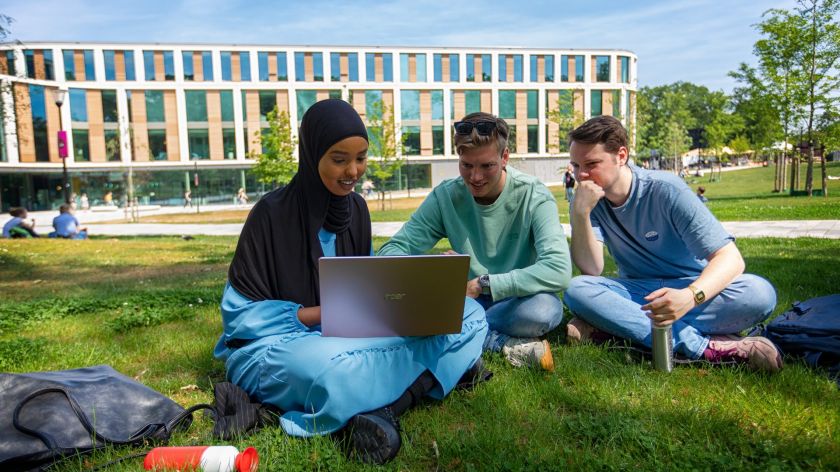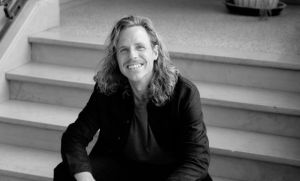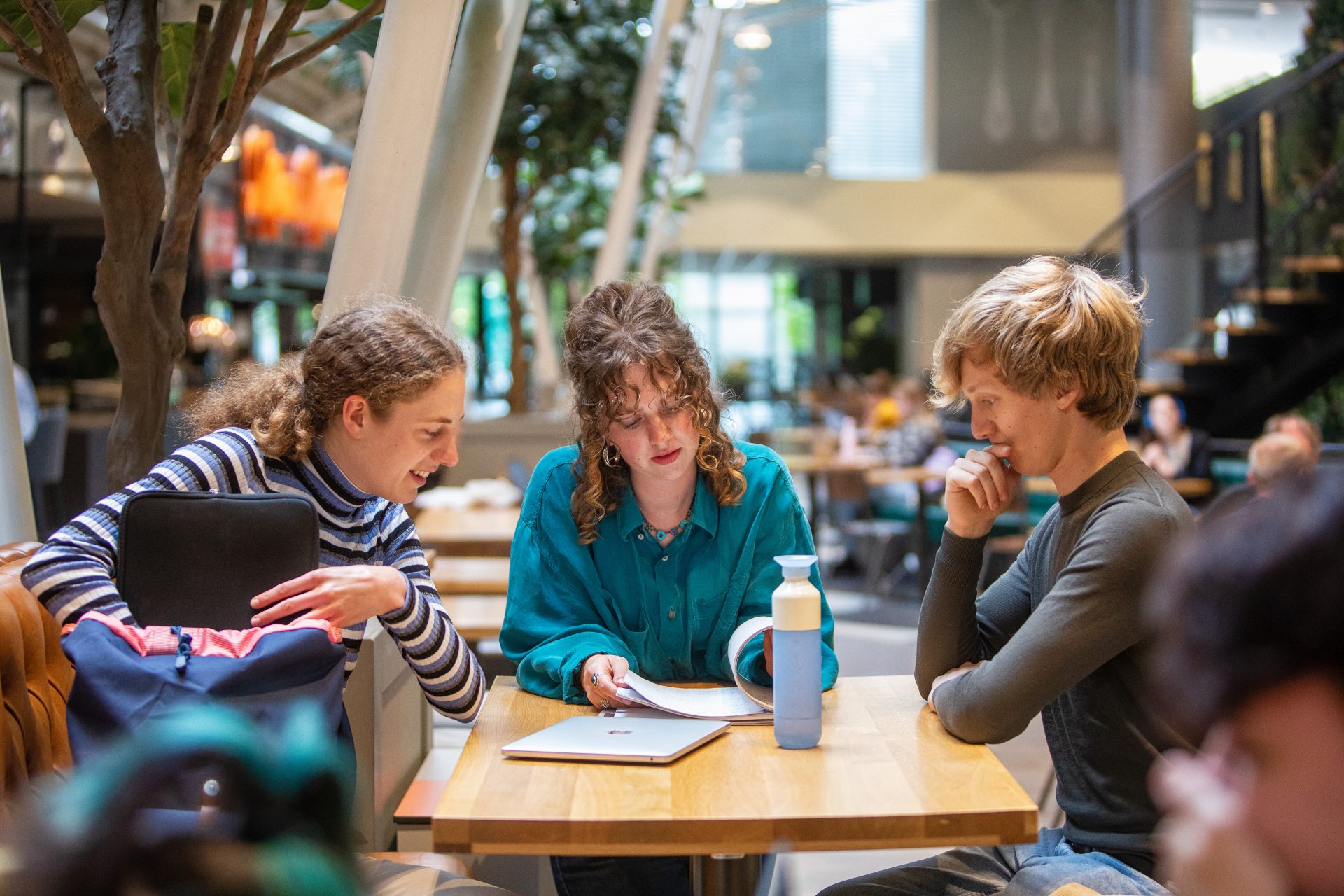Self-centred or Social: how socially engaged are Radboud University students?
-
 Studenten op de campus. Foto: Dick van Aalst
Studenten op de campus. Foto: Dick van Aalst
Housing shortage, climate change, or social inequality. How do Radboud University students perceive the major challenges of our time? And more importantly, how do you ensure as a university that students themselves roll up their sleeves to face these major crises?
Radboud University is a world-changer. With the ‘You have a part to play’ -campaign they hope to attract socially critical employees. They also have the ambition to educate students to become critical academics, who can make sustainable social contributions as professionals. For example, when it comes to environmental problems and social inequality.
The question is, how do these themes resonate amongst students and what do they need to be more socially involved? The university presented researchers Rutger van den Berg and Yvonne van Sark from research firm Youngworks with this question. Their research is still in its final stages, but Van den Berg gives a sneak preview in his keynote during The Education Days.
You were Commissioned by Radboud University to research the world-improving aspirations of over 1.600 Radboud students. What are your most important findings?
‘The research consisted of two phases. First, we interviewed students from all the different faculties about how they perceive the societal ambitions of the university, how they see their own societal role, and how they could be supported in their ambitions to create positive change. It turned out that there’s a wide diversity in how students experience this.

‘In the second phase, we tested our findings by approaching a much larger group with a quantitative questionnaire. The goal was to create a so-called segmentation model, in which students were split into different groups. We are now in the concluding phase, but soon the ‘Future-Makers-model’ will be available to everyone.’
Can you give a sneak preview already?
‘The research showed that 86 percent of students want to “make a societal contribution as a professional” in the future. Being of significance is a driving force for humans, so you won’t easily say no to that, but it’s encouraging. How they envisage this societal contribution varies a lot.’
‘The model distinguishes 5 different types of students’
‘The model distinguishes 5 different types of students with the two extremes being the ‘headstrong advocates’ (13 percent) and the ‘self-centred optimists’ (20 percent). The largest middle group is the ‘hesitant do-gooders’ (30 percent).’
Let’s start with the headstrong advocates.
‘That’s the most engaged group. These students feel personally involved in societal challenges and want to bring positive change to the world, for themselves, and their like-minded peers.
‘They’re, for example, the young activists that clearly make a mark on the image we have of Generation Z; purpose-driven and engaged. It’s also the group that is more quickly disillusioned. They struggle with feelings of helplessness. Because they’re already doing what they can, but how much impact does that really have? This struggle is much less visible in the other four groups.
‘How do you find a healthy balance between taking responsibility and safeguarding your mental health? Here, Radboud University can play a supportive role.’

And the self-centred optimists are on the other end of the spectrum?
‘Right, these students are remarkably positive about the future. Their perseverance and self-confidence give them the trust that a comfortable life with a nice career and a good salary awaits them. Societal challenges interest them less. This group mainly wants to create a comfortable life for themselves and the people in their direct environment. It is nice if your ambitions mix with doing something good for the world. Only, this doesn’t come before personal ambitions.
‘If you want to educate this group into critical academics who actually add social value as a professional, it’s thus of importance to show them that personal ambitions go very well with social ambition.’
Then the biggest group, the hesitant do-gooders.
‘That group reflects the search of many students, which fits very well with their developmental stage, late adolescence. This is when you first start committing to certain ideas, values, and beliefs and step by step you try to align your behaviour. Hesitant do-gooders would like to make a positive change in the future, but they’re not sure yet which positive contributions they can make. They do not yet have a lot of confidence in their abilities and power to change. This is a group that needs to be offered perspective and should be given a taste of what is possible. Give them the feeling of you too can mean something.’
At which faculty will you find the most self-centred optimists or headstrong advocates?
‘Well, we saw that all types are present within all faculties, and we also see that the hesitant do-gooders are the biggest group in all the faculties. However, you do see, for example, that the self-centred optimists are slightly more present in the disciplines within the School of Management. And the headstrong advocates are a bit more present in Arts and Humanities.
What is the final advice to the university? What should they do with these five types of students?
‘You have to be aware of the diversity, there is not a one-size-fits-all strategy to realise Radboud University’s ambitions. This research actually clearly shows that.
‘But it is also an encouraging study. For all the groups, there are possibilities and opportunities to motivate them to get started with the current societal challenges.’
The (fragmented) youth of today
In his keynote at The Education Days, researcher Rutger van den Berg (Youngworks) also wants to talk about today’s youth in a broader sense. What makes young people and students of today different from the generations before them? ‘I show that generations are absolutely not homogenous groups, especially not Generation Z. Gen-Z is growing up in a much more fragmented society than before, which makes that they show more differences amongst themselves.’
You can see this, for example, in their religious or spiritual beliefs. Where in the past you were raised/brought up Catholic or Protestant, nowadays a much more individualistic view of mankind is dominant. ‘From the big box of spiritual and religious stories young people can now choose elements of, for example, Catholicism combined with elements of Buddhism, Islam, or new-age movements, to their own preference. Because everyone can determine their own tastes, there is more fragmentation in philosophical beliefs.’
According to Van den Berg, research shows that, in a broad sense, Generation Z displays the least group cohesion of all generations on values and beliefs. ‘In this, they reflect that the differences in beliefs and values within society are much greater than 30 years ago.’
Translated by Stella Kuipers



